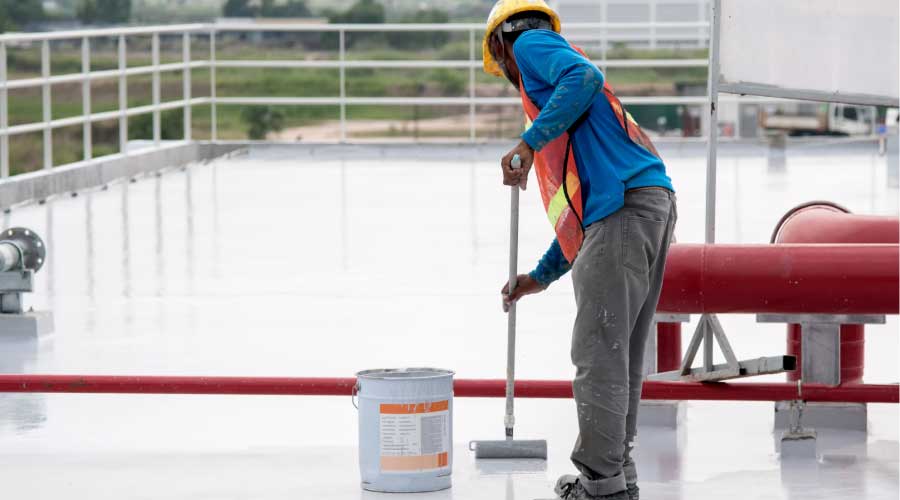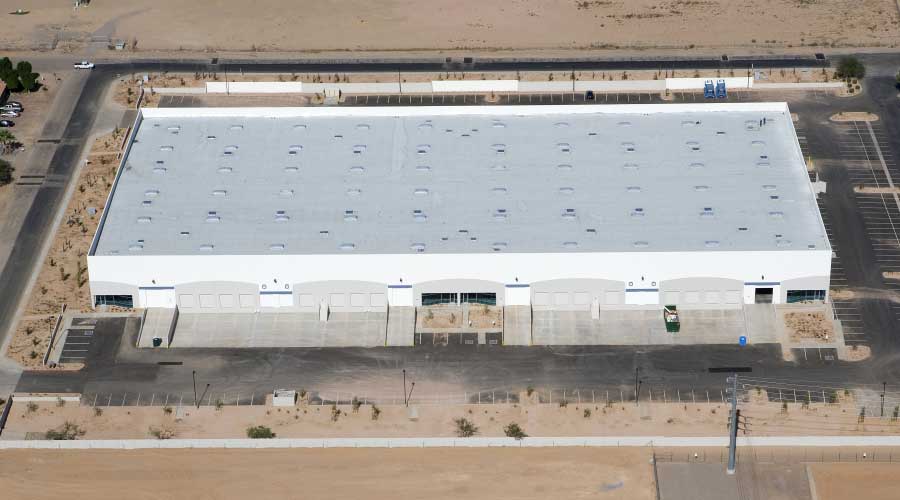Roof Coatings: Classification
Lines previously drawn between fluid-applied roof coatings, fluid-applied roofing, and fluid-applied waterproofing are beginning to blur. Fluid-applied waterproofing products facilities typically used for below-grade or protected-plaza waterproofing now are more common in exposed conditions with a protective surface. Fluid-applied waterproofing products also are more common in sustainable roofing assemblies than they once were.
Based on performance characteristics, some fluid-applied roof coatings can be classified as fluid-applied roofing membranes. The 2009 International Building Code (IBC) includes a paragraph on liquid-applied coatings under Section 15. Despite the advent of new technologies and the introduction of performance standards, the IBC list of acceptable liquid applied roofing products and corresponding ASTM performance standards have not changed significantly in more than 10 years.
The IBC also does not clearly state facilities can use products it lists as acceptable roof covers on their own. Most roof coatings require a waterproof roofing substrate. Managers can expect code revisions soon for liquid-applied roofing that reflect products and standards that are now available.
Waterproofing And Permeability
Traditional roof coatings, such as asphalt cutbacks, asphalt emulsions, and acrylics, typically have higher permeability ratings than products that qualify as standalone, fluid-applied roofing membranes. Permeability can allow moisture vapor to pass through the product, which might be desirable if the moisture content of the existing roofing is in question and moisture vapor needs to be relieved.
Managers should not use traditional roof coatings to provide primary waterproofing, due to their permeability. Managers also should not expect these products to repair leaks without adding supplemental materials and detailing. On the other hand, traditional roof coatings can be very effective at providing UV protection and reflective surfaces for energy conservation.
Managers can specify polyurethanes, silicones, and some polymer-modified bitumen products as a primary roofing or waterproofing layer, but they do have limits and cannot fix leaks if installed over badly deteriorated roofing systems.
High-performance membrane products, such as liquid polyesters, polymethyl methacrylates, and hot-fluid-applied rubberized asphalt, are standalone roofing and waterproofing systems if installed over an approved roof deck with proper UV protection.
Benefits Of Roof Coatings
The primary goal of fluid-applied roof coatings is to protect existing surfaces. Coatings enhance the life cycle of bituminous roofing susceptible to UV degradation, and they protect the surface, which can add a few years to the roof's service life.
Extending the life of a roofing system helps organizations meet sustainability goals by reducing waste sent to landfills during re-roofing projects. Longer life cycles also help managers avoid labor costs associated with roof replacement and reduce maintenance costs.
Exposed, fluid-applied systems with reflective surfaces can produce energy savings. Reflective surfaces on metal and low-slope systems reduce temperatures at and below the roof surface, and they reflect solar radiation, lower cooling loads, and reduce heat islands in urban areas.
Related Topics:













